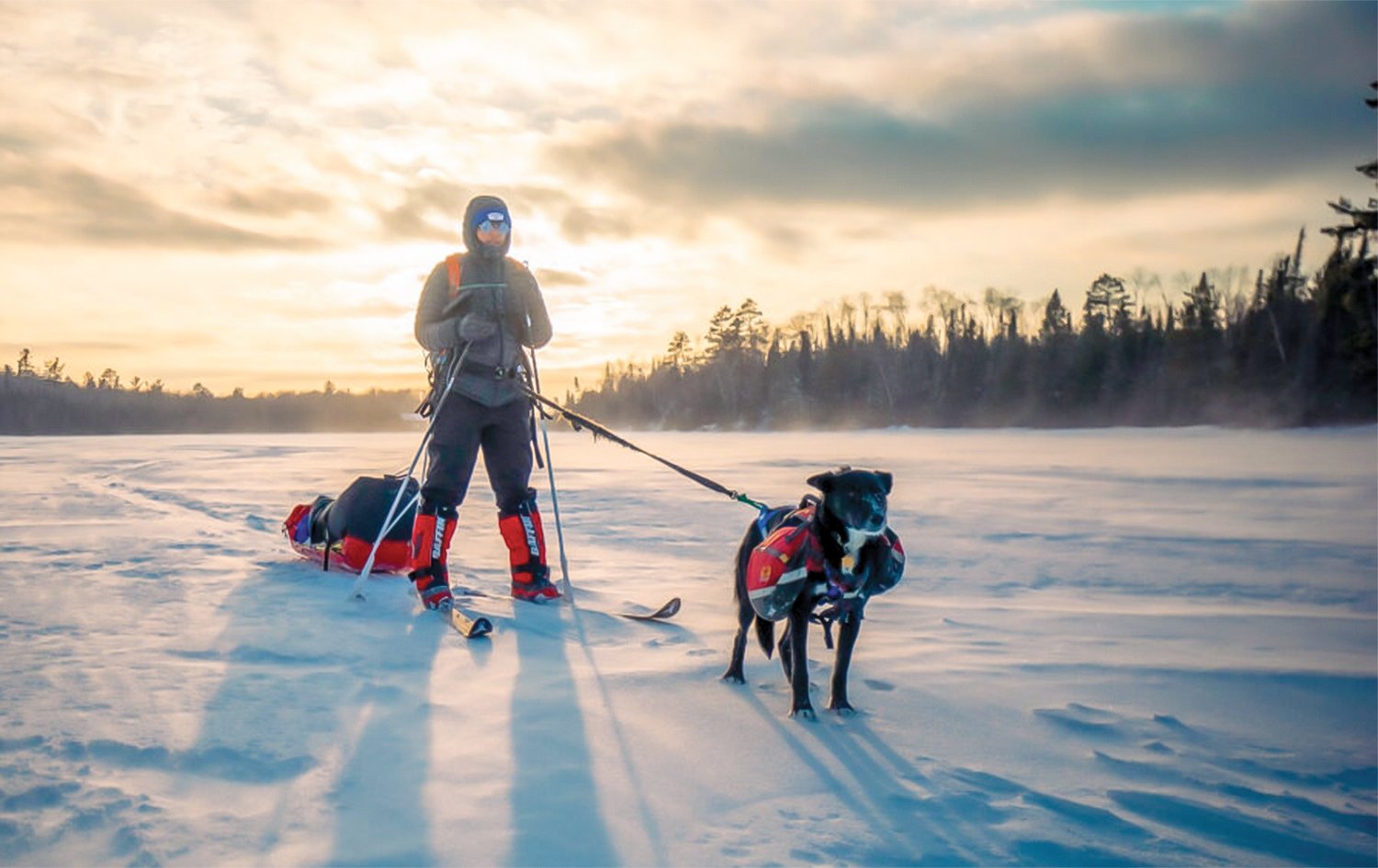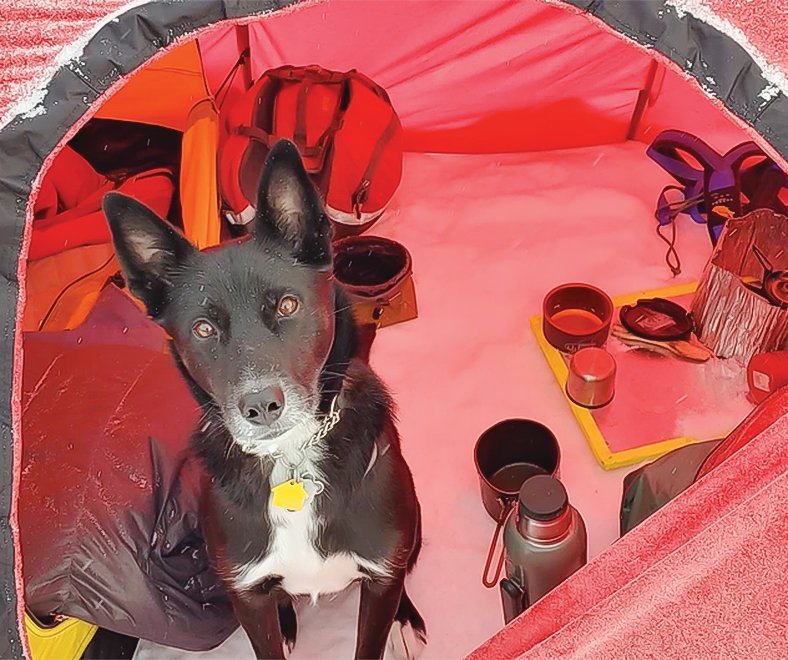Support the Timberjay by making a donation.
A woman, her dog, and the wild
Duluth woman, Emily Ford, to trek 210 miles across the frozen Boundary Waters
THE BOUNDARY WATERS— A young woman from Duluth is pitting her tenacity and desire for outdoor adventure against whatever Mother Nature serves up over the next month here, along the …
This item is available in full to subscribers.
Attention subscribers
To continue reading, you will need to either log in to your subscriber account, or purchase a new subscription.
If you are a current print subscriber, you can set up a free website account and connect your subscription to it by clicking here.
If you are a digital subscriber with an active, online-only subscription then you already have an account here. Just reset your password if you've not yet logged in to your account on this new site.
Otherwise, click here to view your options for subscribing.
Please log in to continue |
A woman, her dog, and the wild
Duluth woman, Emily Ford, to trek 210 miles across the frozen Boundary Waters
THE BOUNDARY WATERS— A young woman from Duluth is pitting her tenacity and desire for outdoor adventure against whatever Mother Nature serves up over the next month here, along the U.S.-Canadian border. With the help of her canine companion, named Diggins, Emily Ford left Crane Lake last Friday at the start of a 210-mile trek through the wilderness to Grand Portage.
She headed into the wilderness just ahead of some of the coldest temperatures of the winter. Thermometers around the area dropped to the mid-40s below zero on Sunday, with daytime highs struggling to reach above zero. But Ford, who spoke to the Timberjay just hours before embarking on her adventure, was confident she had the ability to meet the challenge.
Ford has spent much of the winter working at the Wintergreen Dogsled Lodge, near Ely, where she started as an intern. “But she was so competent, we just put her on staff,” said Wintergreen owner and operator Paul Schurke. She helped lead dogsled trips into the wilderness, where she learned winter survival methods from some of the most experienced polar explorers anywhere.
“It was awesome,” said Ford of the experience.
She’s road-tested her gear in the weeks leading up to her adventure and she’ll get some assistance from Diggins, who has learned to skijor, so he’ll be providing an assist as Ford propels herself and about 145 pounds of gear she’ll pull in a sled, known as a pulk, behind her. Ford couldn’t really predict what the trail conditions will be like over the next month. She expects to be able to follow snowmobile tracks for a portion of the route that’s outside the Boundary Waters wilderness boundary. She also expects to find trails broken by mushers in other locations. But she’ll likely be breaking trail at points along the way. On large lakes, where the wind helps to pack the snow, the going may be relatively smooth. But with about two feet of snow on the ground, the going is likely to be challenging on untracked portages or smaller lakes. She expects to average about seven miles a day.
Ford will be traveling without a heated tent. Her new four-season tent includes a vestibule, where she’ll be able to cook meals, which is likely to provide a least a little break from the winter’s chill. Overnight, she’ll rely on a zero-degree-rated sleeping bag, a heavy quilt and the warmth provided by Diggins, who will sleep under the quilt, to stay warm.
Ford, who works summers as a gardener at Glensheen Mansion, is no stranger to physical challenges. Last winter, she made a name for herself, and Diggins, in the world of explorers when the two of them through-hiked the 1,200-mile Ice Age Trail in Wisconsin, becoming only the second person to do so. Diggins, an Alaskan huskie from Minnesota, joined Ford during her Wisconsin adventure last winter and the two have been inseparable ever since.
While this winter’s trek is shorter in distance than her Wisconsin adventure, it’s bound to be far more challenging. And, at times, she will be many, many miles from potential rescue. Ford, however, will have some help along the way. Sled dog teams from YMCA’s Camp Menogyn and the Voyageur Outward Bound School will provide supply drops at two locations along her route.
Spreading the message
For Ford, the trip is not just a lark. She’s encouraging her more than 15,000 followers on Instagram to donate to the Friends of the Boundary Waters “No Boundaries to the Boundary Waters” program, designed to facilitate wilderness trips for underprivileged youth, particularly people of color. As a black woman, Ford hopes to use her status to encourage more people of color to venture into the outdoors. “It’s about reaching people who feels like the outdoors isn’t for them,” she said.
She said it costs about $800 to send one young person on a wilderness trip and she’s hoping to raise enough to make that experience possible for at least five kids.
Anyone wanting to donate to her cause can do so through the app Venmo by texting @emilyontrail or by going to her website at emilyontrail.com.
You can also search Emily Ford on Instagram, where she hopes to post updates and photos from her journey when cell phone service is available.
Update:
On her fourth day on the trail, Ford reported slow going, with two days with snow and some open water on rivers. But, as of Tuesday, she had made it to Lac La Croix and was making good progress.
She reports that Diggins “got into something,” and wouldn’t eat for a day or so.” Diggins is feeling better now and is eating again but she’s taking a break from helping to pull Ford and her gear. “I’m not having her pull until she’s back and ready.”









